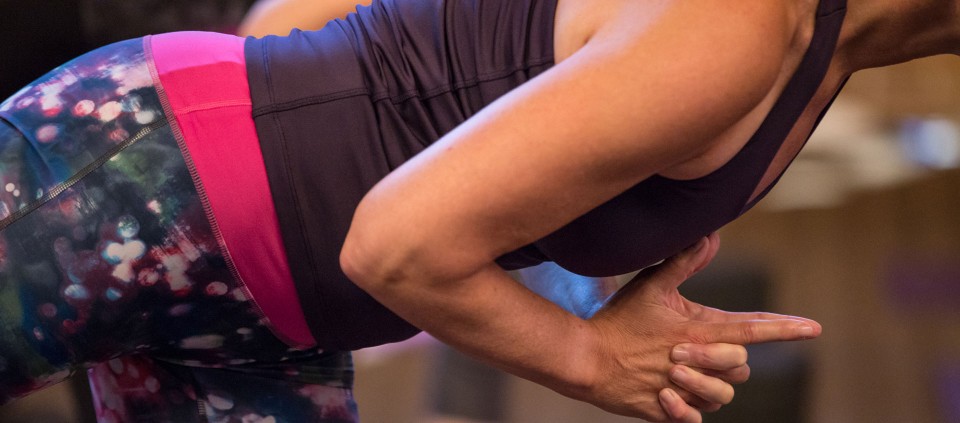Reconceiving Our Bodies as Fascia

In my book The New Rules of Posture, I wrote: “Connective tissue is a blanket term for all the tissues that separate, contain and connect everything else in the body.” This sentence implies that “everything else”—bones, organs, muscles—is what matters. Although I went on to discuss the continuity and communicability of fascia, I was still adhering to the conventional view of the body.
Current fascia research suggests that we’ve had it backwards for several millennia. This research indicates that bones, muscles, and organs—indeed, all other tissues in the body—may be, in fact, specializations within the unified medium of fascia. A primary constituent of embryonic development, fascia is the very clay of our creation. In other words, fascia is the stuff we’re made of.
What if we were to reconceive our bodies as fascia? We know that primitive lifeforms emerged from the oceans onto land and into the air. We can imagine those early creatures evolving special functions: lungs to breathe, limbs to crawl and creep, teeth to tear, a tongue to suck, ears to process sound—whatever was needed to eventually become humankind. Contemporary human bodies—as specialized as our anatomy books portray them—still consist of this primary membranous material that is prior to all else. Consider the possibility that our specialized organs—reproductive, perceptual, and neuromuscular systems and all the rest—might be creation’s afterthoughts.
Fascia and Fitness
If the news about the nature of fascia keeps growing and spreading as it has done in the last 15 years, we may see the fitness industry making some changes. Isolation of muscle groups, repetitive joint actions, and training as hard as you can will begin to look very old school. This doesn’t mean that conventional exercises that target strength, coordination, and flexibility have no merit, but rather that conditioning fascia requires an additional approach to training.
Fascia’s natural endowment is to bounce. When you look at a happy kid at play, you’re looking at healthy fascia. You see springiness, resilience. Another hallmark of healthy fascia is movement continuity and grace. You can feel this in yourself. On certain days or in some situations, your movement feels free and easy. But if, for example, you've had the flu and have been in bed for several days, you find that when you get up to move you are stiff. That’s the downside of fascia: immobility changes it chemically, making it thicken and harden. The less mobile you are, the more brick-like you become.
Similar to a sea sponge, fascia thrives when water pumps into and out of it. When you sit for long periods, when your gait is more plodding than energized, your fascia literally dries out. It stiffens along lines of use. That means that the more repetitive and restricted the choreography of your daily life, the more you reduce your capacity to adapt to unexpected movement demands like tripping over a curb or a cat.
Healthy, hydrated fascia is an essential ingredient in enduring youthfulness and grace of movement. The stiffness we experience when we begin to age is a sign that fascial layers are dehydrated and are becoming adhered to one another. That happens with chronically poor posture as well.
An Exercise for Fascia Health
Stand up and reach your arms high into the air. Make fists and tighten your elbows so you’re stretching your arms and contracting them at the same time. Push down into the floor with your feet and tighten the muscles around your knees.
Reach your hands as far away from your feet, as you can, stretching your spine. Lean your spine to one side, now opening your hands and stretching your fingers wide. Breathe in, and out. Lean your spine to the other side and scrunch up your face, wrinkling your nose. Then open your mouth and eyes super-wide. Return to center, still reaching upward.
Now relax your arms by your sides. Notice how your body feels. Walk around a bit. Tune into your movement—more fluid? More upright? Looser? More "you"?
What you just did is called pandiculation. All animals do this, some of them as many as 50 times a day. This reflexive impulse primes your body's fascia for movement after periods of inactivity. Yawning is a type of pandiculation. Maybe you yawned just now.
Hydrate Your Fascia
Fascia Researcher Robert Schleip, PhD, tells us that whole-body stretches like this help keep your fascia hydrated and healthy. But, unlike cats and dogs, humans tend to stifle this natural urge. In polite company, such movement is considered rude.
We tend to confine our full-body stretching to the yoga studio. But, because human lifestyles have become so sedentary, our bodies crave those full-body stretches much more frequently than a few times a week.
What if we were to emancipate our collective body images? What if we stopped worrying about what others think when we grant our bodies the movement they need? Give yourself a juicy moment of pandiculation next time you get up from a movie seat, get out of your car, or stand up from a long meeting.
We could start a movement!
Find out about upcoming programs with Mary Bond at Kripalu.
This article was originally published on Mary’s website, healyourposture.com.
Mary Bond, MA, a Rolf Movement® coach, Registered Somatic Movement Educator, and emerita faculty of the Rolf Institute®, teaches a sensory approach for transforming posture, movement, and worldview internationally.
Full Bio and Programs